Gold prices hover near 6-week high amid softer dollar, Fed rate cut bets
Of course, you may be asking yourself what I mean by that.
Historically, bear markets have tended to be pretty evident, as highlighted in the chart below. These bear markets are often more protracted affairs that lead to investors developing profoundly negative sentiment towards markets. This article will use a weekly moving average crossover to identify “corrections” and “bear markets.” While our definition may not “jive” with the mainstream narrative, the reasoning will be evident momentarily.
When the short-term moving average crosses below the long-term, a “sell signal” occurs. That trigger suggests that investors should reduce equity risk in portfolios. When that signal reverses, investors should increase equity risk. Since 1995, the weekly indicator has only given three “false” signals.
However, those signals were quickly reversed as the bull market continued, doing little harm to investors’ total returns. The signals warned investors of critical downturns to reduce equity exposure and avoid more significant capital destruction.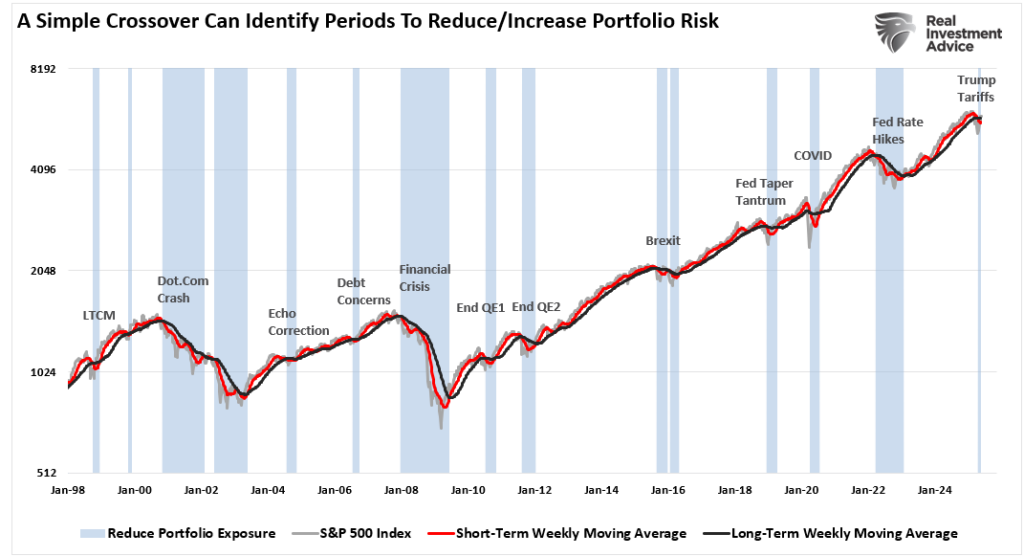
The only actual “bear market” over this period was the 2000 “Dot.com crash” and the 2008 “Financial Crisis.” These were the only two declines that broke the previous bullish price trend. Since then, every highlighted drawdown has been a “correction” within the ongoing bullish price trend. Of course, that was a function of the Federal Reserve’s repeated interventions to mitigate any economic and financial instability risk.
In 2000 and 2008, the moving average crossover signal warned investors that a recessionary onset was coming 9 and 12 months ahead of actual recognition. The weekly moving average signals also triggered a sell signal in early 2022 ahead of the ~20% decline, although the NBER did not recognize a recessionary onset. For our purposes, 2022 was a “stealth” bear market.
While the major indices did not correct that much, there was a lot of devastation below the surface, hidden by the effects of “passive investing.”
Notably, these signals are not always perfect. The drawdown was so swift in 2020 during the pandemic shutdown that the signals to reduce and increase exposure occurred within two months. However, outside of anomalous events, paying attention to these moving average signals over the longer term can provide investors with a valuable roadmap to follow.
But we will add one more piece of analysis to determine whether we are in a “stealth bear market“ or just a correction.
Risk Ranges and Signal Confirmations
Understanding that the market tends to lead the economy by six months or more, we can use longer-term market signals to help us navigate the risk of a more significant correction driven by a recessionary downturn.
We have produced a weekly “risk range analysis” in the #BullBearReport for several years. That report contains several measures of analysis, as shown below.
- The table compares the relative performance of each sector and market to the S&P 500 index.
- “MA XVER” (Moving Average Crossover) is determined by the short-term weekly moving average crossing positively or negatively with the long-term weekly moving average.
- The risk range is a function of the month-end closing price and the”“bet”” of the sector or market. (Ranges reset on the 1st of each month)
- The table shows the price deviation above and below the weekly moving averages.
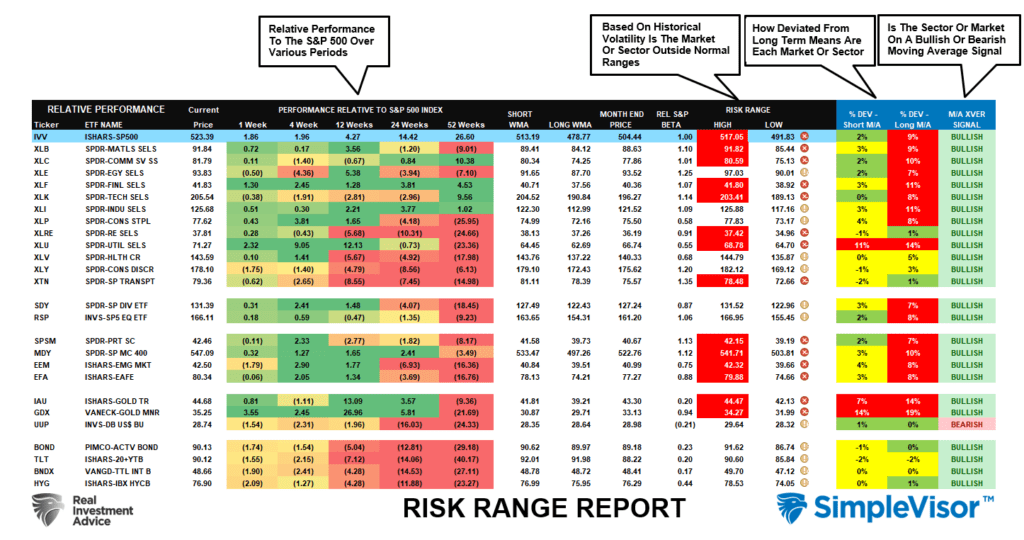
For this analysis, we will focus on the far right column. In the above example, November 2021, every primary market and sector (except for the U.S. dollar) was on a bullish moving average crossover. Given this is weekly data, it is slower to move, which tends to provide better signals for both increasing and reducing portfolio risk.
The “Stealth Bear Market” Of 2022
Of course, in mid-January 2022, the market started to struggle, but the outlook for equities remained very bullish. The investor allocation and sentiment index remained at high levels in “greed” territory.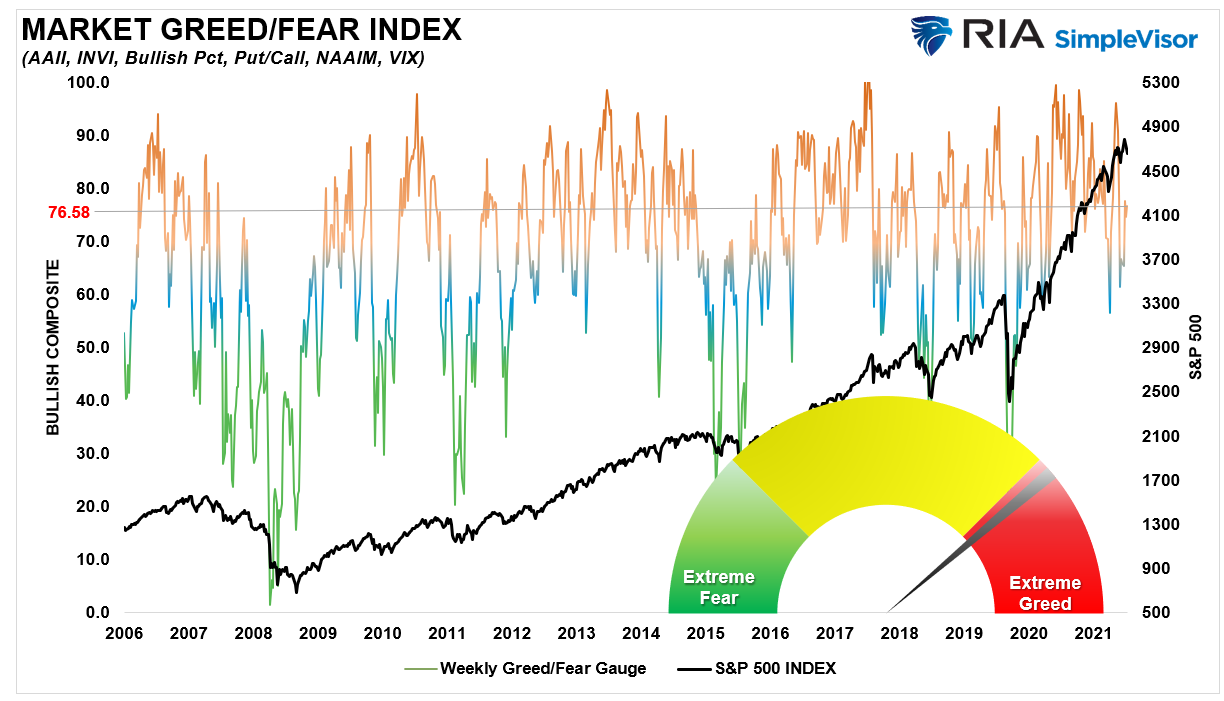
However, the number of markets and sectors on “bearish” moving average crossovers had increased markedly compared to just two months earlier. While that deterioration was increasing, akin to an undetected virus, the overall market appeared healthy.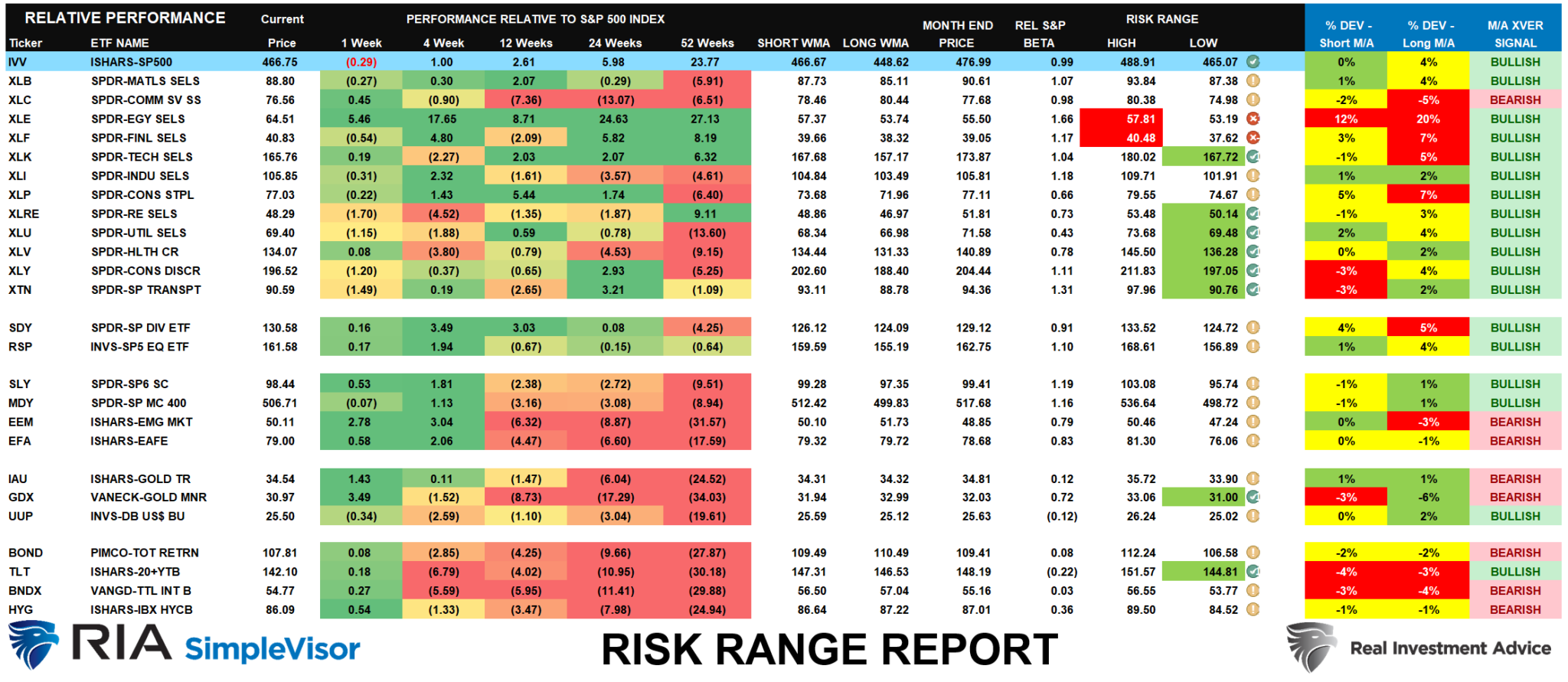
However, the “stealth bear market” eroded investor capital as the virus spread. Each subsequent decline turned more markets and sectors into bearish sell signals. However, that erosion within the market also indicates when a stealth bear market is near completion. The report below is from the October 6th, 2022, Bull Bear Report:
“The selling pressure continued this week, taking almost every sector and market into double-digit deviations below long-term weekly moving averages. Such extremes are not sustainable, and when all markets and sectors are this oversold, a reflexive rally becomes highly probable.”
The table below shows that almost every sector and market had bearish moving average sell signals triggered. At the time, however, media headlines were filled with “death of the dollar,” recession warnings, and bear market alerts. However, such negative extremes are often coincident with market bottoms.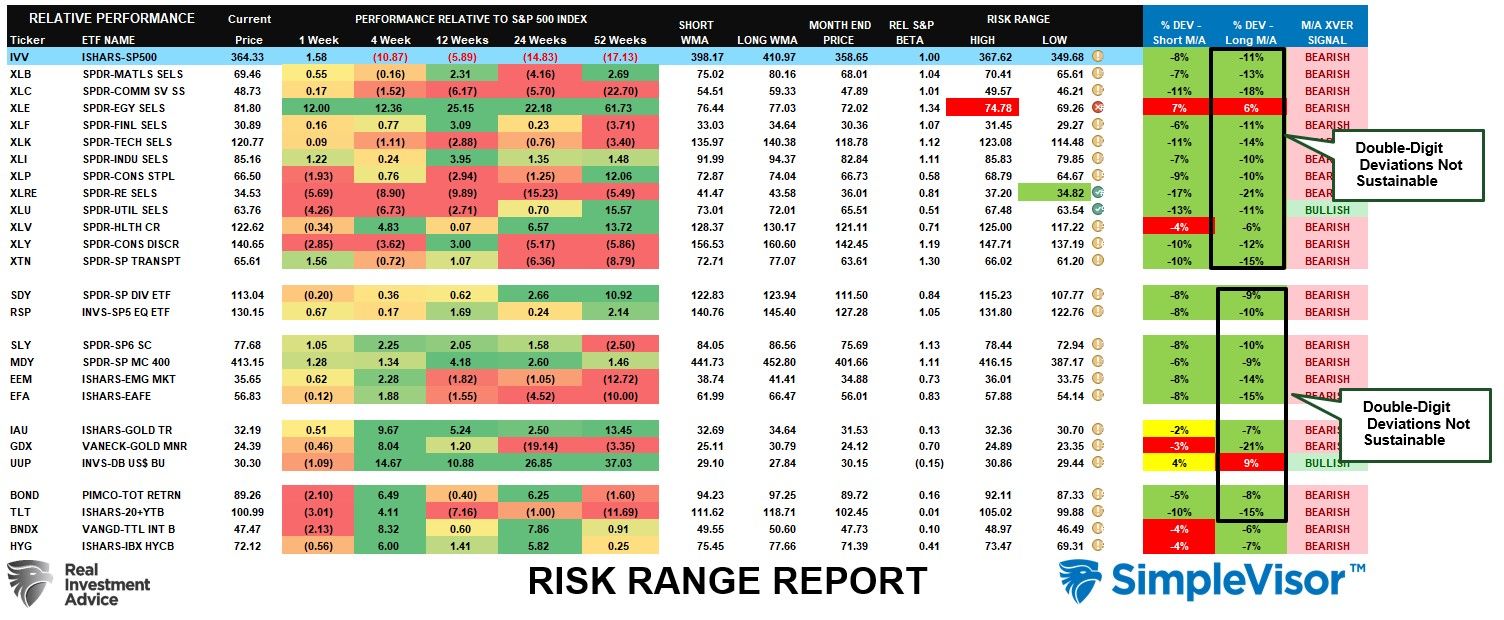
Of course, as we now know in hindsight, October 2022 marked the bottom of the market, and the recession predictions have faded into the past. While it was not the “great bear market” many had predicted, and the world did not end, even “stealth” bear markets can be painful.
Such seems to be where we are currently.
2025 Walking A Similar Path
Heading into the end of 2024, the market posted its second annual 20% gain since the 2022 correction. Unsurprisingly, virtually every primary market and sector was on weekly bullish buy signals, confirming the bull market trend was intact. However, as noted above, when virtually everything is a “buy,” the question should become, “Who is left to buy?” Such was the point we discussed in early January 2025 in “Curb Your Enthusiasm.”
“With slowing economic growth, fiscal policy uncertainties, global challenges, overconfident sentiment, and ambitious earnings expectations, investors have plenty of reasons to approach the markets carefully. There will be a time to raise significant cash levels. A good portfolio management strategy will ensure exposure decreases and cash levels rise when the selling begins.”
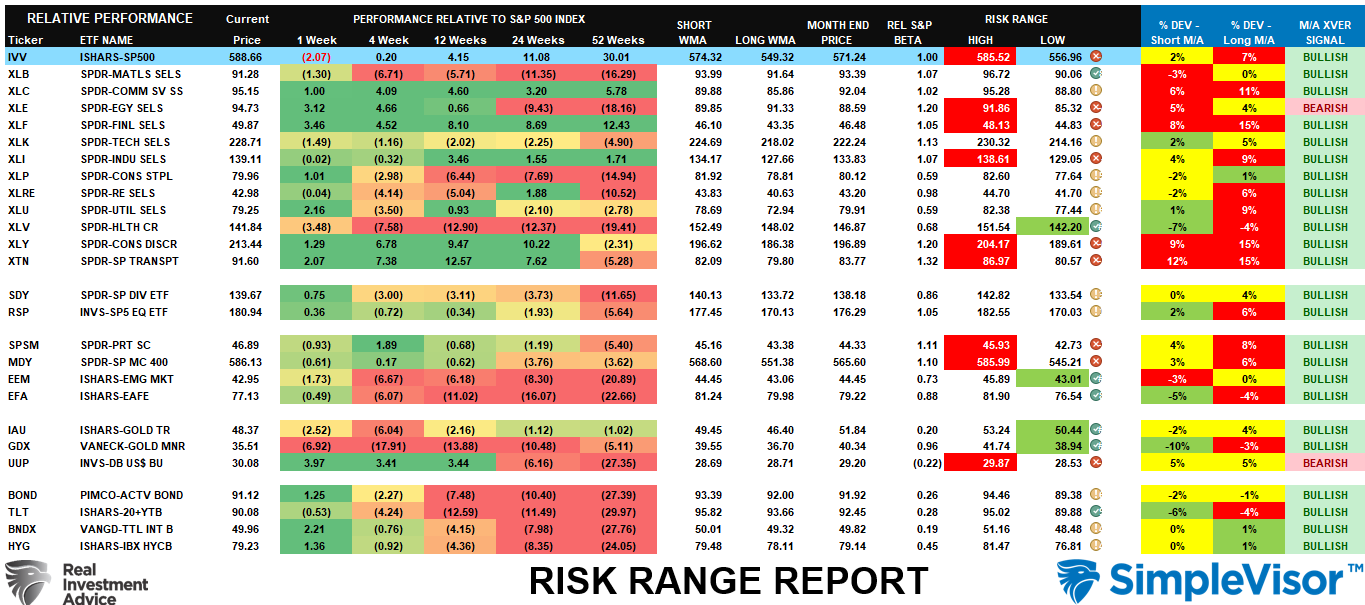
Furthermore, investor sentiment and allocations are also extremely bullish, suggesting that market risk is increasing.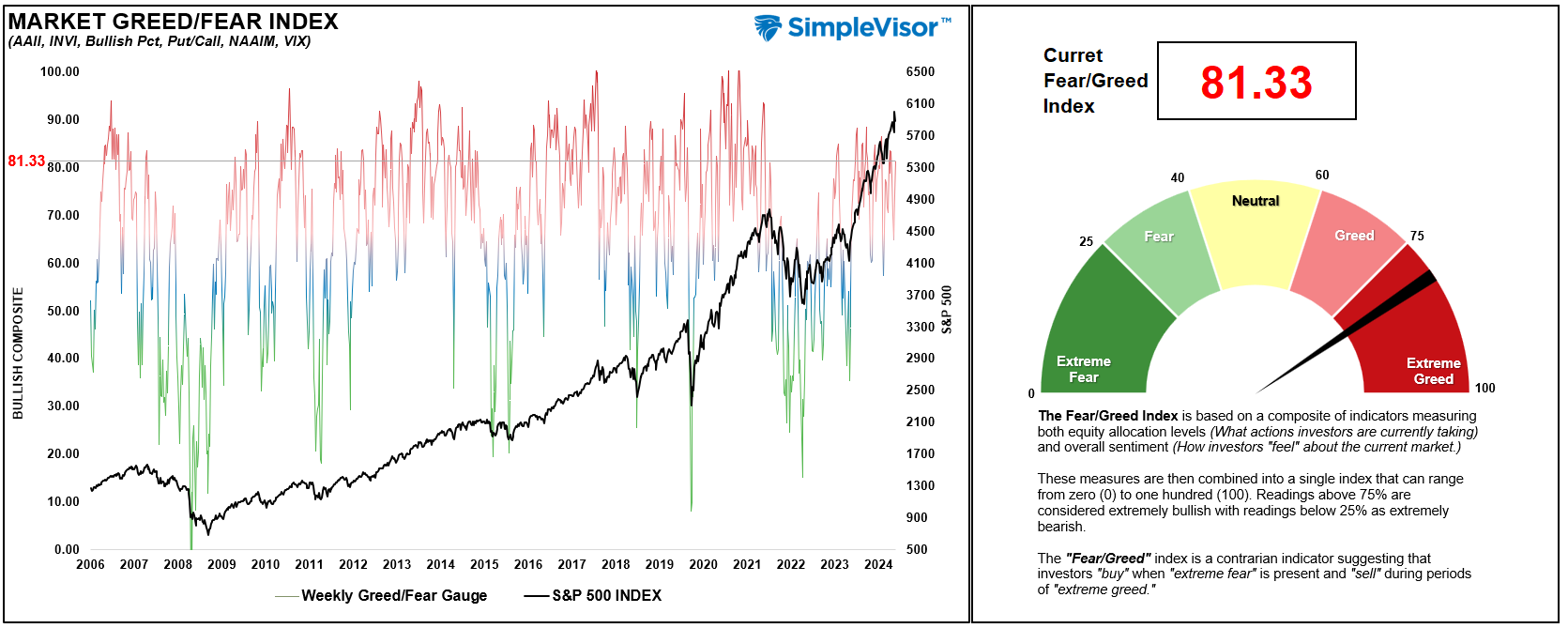
Of course, that overly bullish sentiment and investor allocation mix gave way in late March and early April as President Trump shocked the world with a more aggressive-than-expected tariff plan. That event caused a very sharp reversal of allocations and sentiment, leading to our conclusion on April 6th that there was “Hope In The Fear” for contrarian investors. To wit:
“The weekly “Risk Range Report” details three critical factors investors should know. The first is that the recent market crash has pushed every major market and sector well below normal monthly tolerances. Only during market crash events do you see such uniformity of extremes across all markets. Secondly, the deviations from longer-term moving averages have reached double digits. Such deep deviations across many sectors and markets are also unusual and historically precede bullish reversions to the mean.”
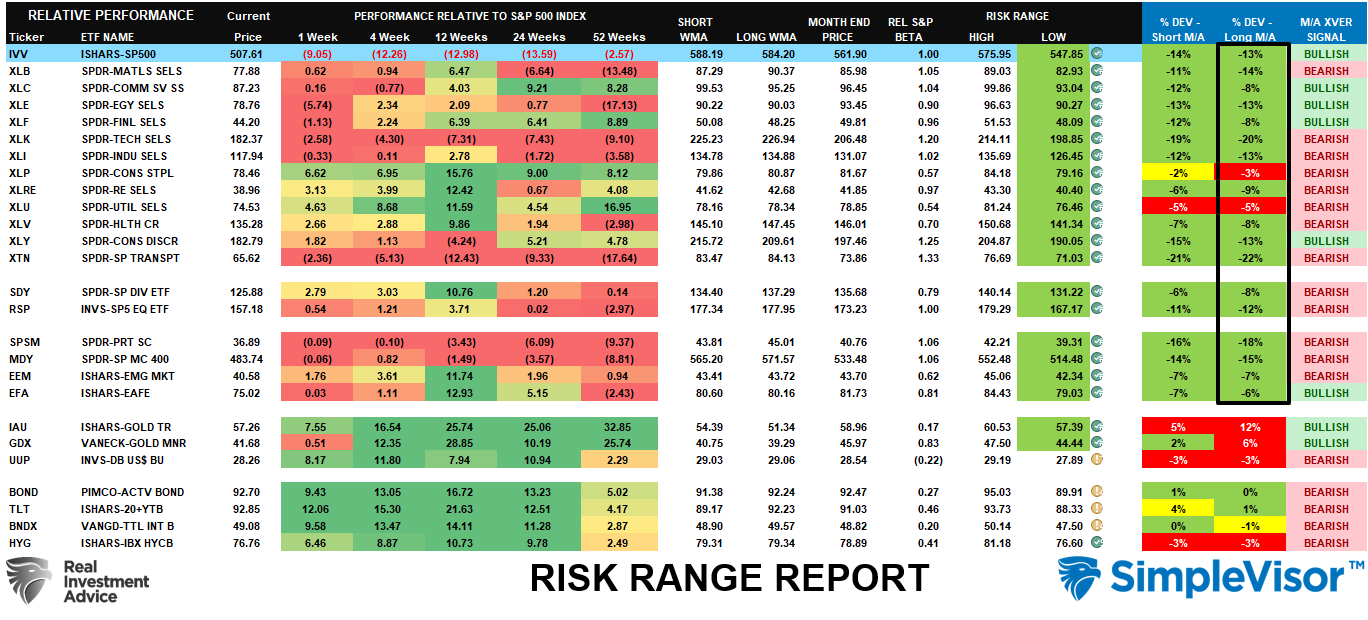
Furthermore, the investor sentiment and allocation measures were at more extreme lows.
“While readings are not as negative as seen during the 2020 correction or 2008 bear market, current readings are at levels that have also previously confirmed near-term market lows and reflexive rallies. When these readings are combined with the technical readings above, investors are provided with a higher degree of confidence versus non-confirmed readings.”
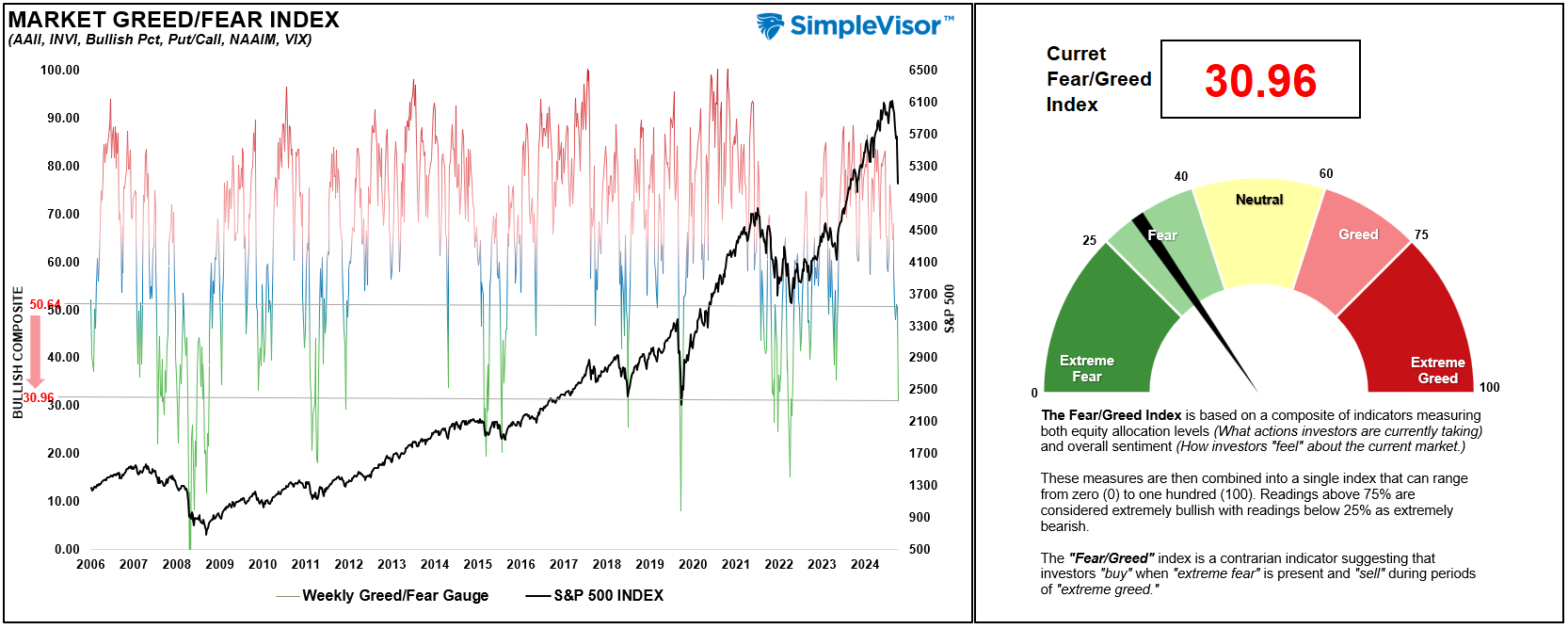
Since then, the market has recovered nicely. However, the question is whether the current “stealth bear market” is over, just as in October 2022.
Corrections Tend To Be Opportunities
Just as we saw in 2022, the promoters of “bearish porn” are seizing the headlines with irrational fears of the “loss of reserve currency status,” the “deficit doom loop,” and the impending “market crash” that will wipe out investors. Such headlines are great for getting clicks and views, but do little to help investors build long-term wealth.
Sure, those things can happen, but they won’t happen this year, and most likely not in your lifetime. So it is crucial to focus on the time frame and factors within our control.
Once again, most markets and sectors are on “bearish crossovers.” Does this mean the “stealth bear market” is set to continue? Or was the April low, with profoundly deep negative sentiment, the end of the correction?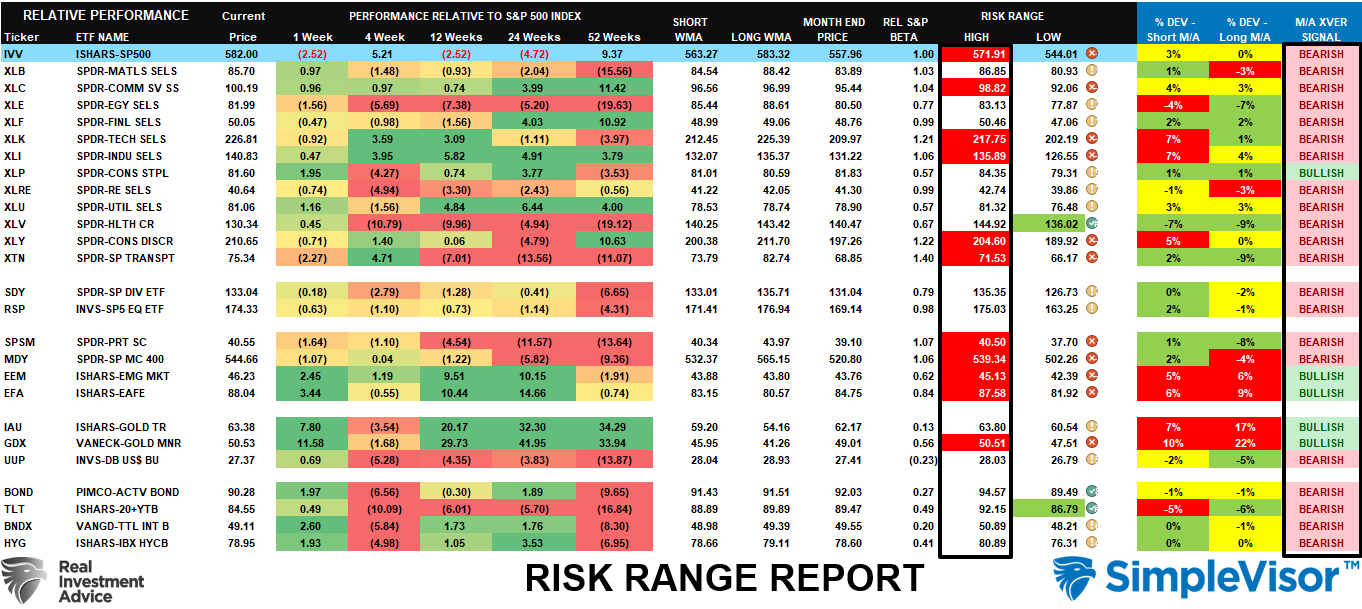
Unfortunately, it is too early to know for sure. However, we are watching the longer-term moving averages closely. When more of these indicators reverse from bearish to bullish, the return of a more bullish market will be indicated.
However, risk remains somewhat elevated for the moment, and investors should consider being more conscious of portfolio risk until things become more certain. The one crucial note is that reversing the current bearish signals to bullish is an opportunity for astute investors for longer-term returns.
Revert To Your Process
Given the uncertainty of what potentially happens next, the recent rally is an excellent opportunity to adjust portfolio risks to navigate the next leg of this market cycle.
Step 1) Clean Up Your Portfolio
- Tighten up stop-loss levels to current support levels for each position.
- Hedge portfolios against significant market declines.
- Take profits in positions that have been big winners.
- Sell laggards and losers.
- Raise cash and rebalance portfolios to target weightings.
The next step is to rebalance your portfolio to the allocation that will most likely weather a “cold snap.” In other words, consider what sectors and markets will improve in whatever economic environment you believe we will experience in 2025.
Step 2) Compare Your Portfolio Allocation To The Model Allocation.
- Determine areas requiring new or increased exposure.
- Calculate how many shares to purchase to fill allocation requirements.
- Determine cash requirements to make purchases.
- Re-examine the portfolio to rebalance and raise sufficient cash for requirements.
- Determine entry price levels for each new position.
- Evaluate “stop-loss” levels for each position.
- Establish “sell/profit taking” levels for each position.
Step 3) Have positions ready to execute accordingly, given the proper market set-up.
In this case, we are looking for positions that have either a “value” tilt or have pulled back to support and provide a lower-risk entry opportunity.
While market conditions remain uncertain, preparing and adjusting strategies can help investors navigate volatility confidently. As technical indicators flash warning signs, a well-structured risk management approach will protect capital and preserve long-term gains.
Understand that this “stealth bear market” will end. When it does, you want to be able to take advantage of it, not just recover with it.
